Imagine strolling along Ardmore’s picturesque beach, unaware that beneath your feet lies an ancient marvel – a submerged crannog that once stood proudly above the waves. This fascinating discovery takes us on a journey through time, offering a glimpse into Ireland’s rich prehistoric past.
A Hidden Treasure Revealed
In 1879, the eagle-eyed R. J. Ussher stumbled upon an extraordinary find:
- An oval structure, approximately 100 feet in diameter
- Wooden piles embedded in a layer of peat, now submerged beneath the sea
- A rare example of a “submarine crannog” along Ireland’s coast
Life in the Ancient Lake Dwelling
Picture a thriving community, living on this artificial island:
- A circle of oak piles driven into the ground, interwoven with wattles
- The surface built up with timber, peat, and brambles
- A central hearth of stones, surrounded by wooden houses
- Families carrying out their daily lives, protected from outside threats
Tantalizing Clues
The excavation yielded intriguing artifacts:
- A carved wooden handle, possibly from a knife or spoon
- A disc-shaped piece of wood with a central hole, perhaps a churn lid
- Iron tools, including what might have been a hatchet and bill-hook
- Bones of red deer, ox, goat, pig, and ass, hinting at the inhabitants’ diet
A Landscape Transformed
The crannog’s current underwater location raises fascinating questions:
- Was Ardmore Bay once a protected lagoon or marsh?
- How has coastal erosion reshaped the landscape over centuries?
- What secrets might still lie beneath the waves?
As you gaze out over Ardmore Bay, let your imagination travel back to when this now-submerged settlement buzzed with life. The Ardmore crannog stands as a testament to human ingenuity and adaptability, reminding us that the tides of time can reveal extraordinary glimpses into our past[1][2][5].
Citations:
[1] https://www.ardmorewaterford.com/crannog/
[2] https://www.ardmorewaterford.com/what-lies-beneath-ardmore-bay/
[3] https://sources.nli.ie/Record/PS_UR_095311/Details
[4] https://catalogue.nli.ie/Record/vtls000742047/HierarchyTree?hierarchy=vtls000246119
[5] https://www.jstor.org/stable/20651495
[6] https://www.jstor.org/stable/pdf/25507765.pdf
[7] https://archaeologydataservice.ac.uk/library/browse/personDetails.xhtml?personId=55707
Explore A Hidden Treasure On The Ardmore Coastline
From a majestic headland to an idyllic bay, Ardmore’s coastline surrounds a village full of culture, creativity, music, adventure, unforgettable experiences, and great escapes.
But, there is a hidden treasure that once stood prominently on what is now the main beach in Ardmore.
It was a Crannog, and we are pleased to present an excellent account from 1879 that tells a fascinating story of life within a Crannog.
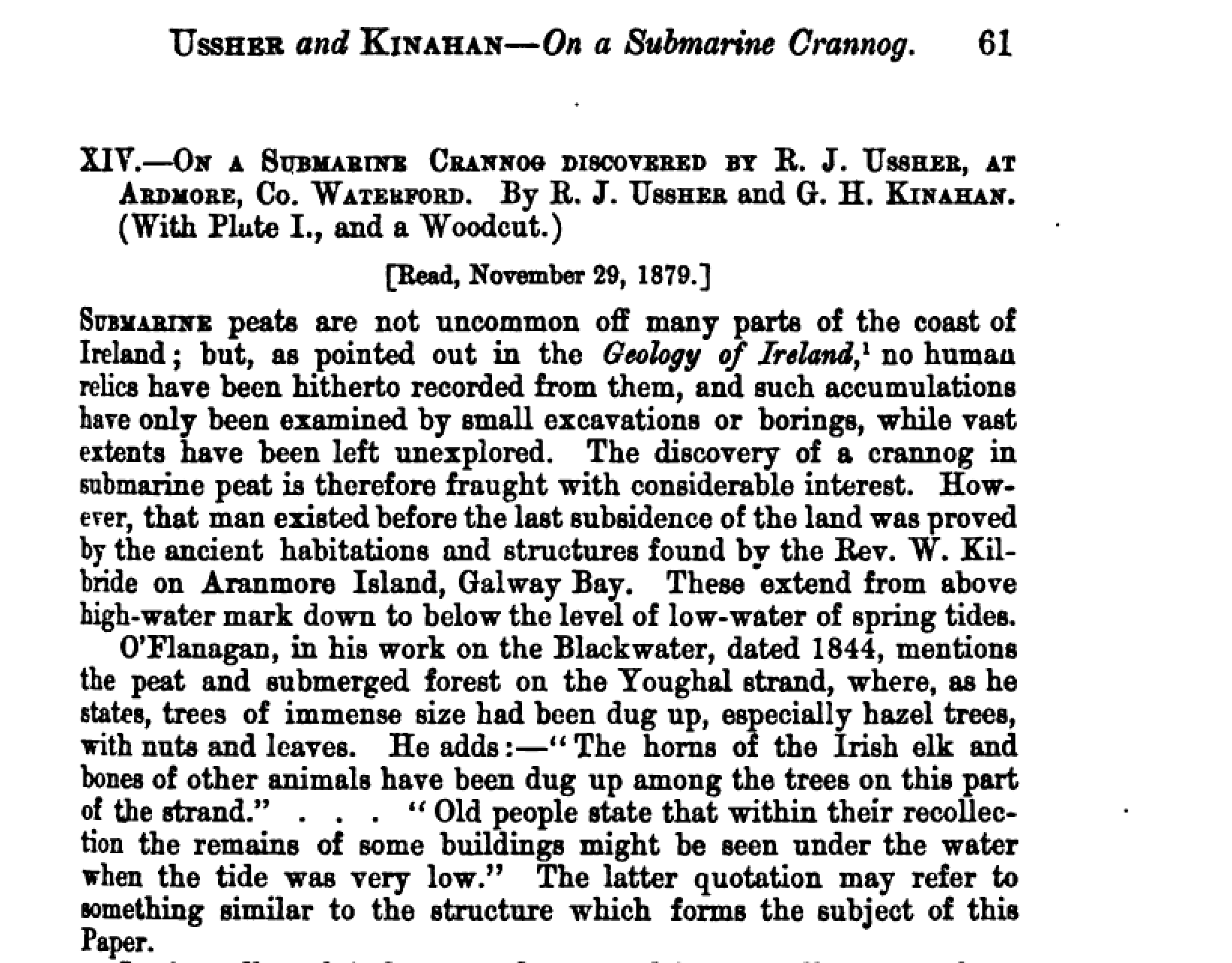
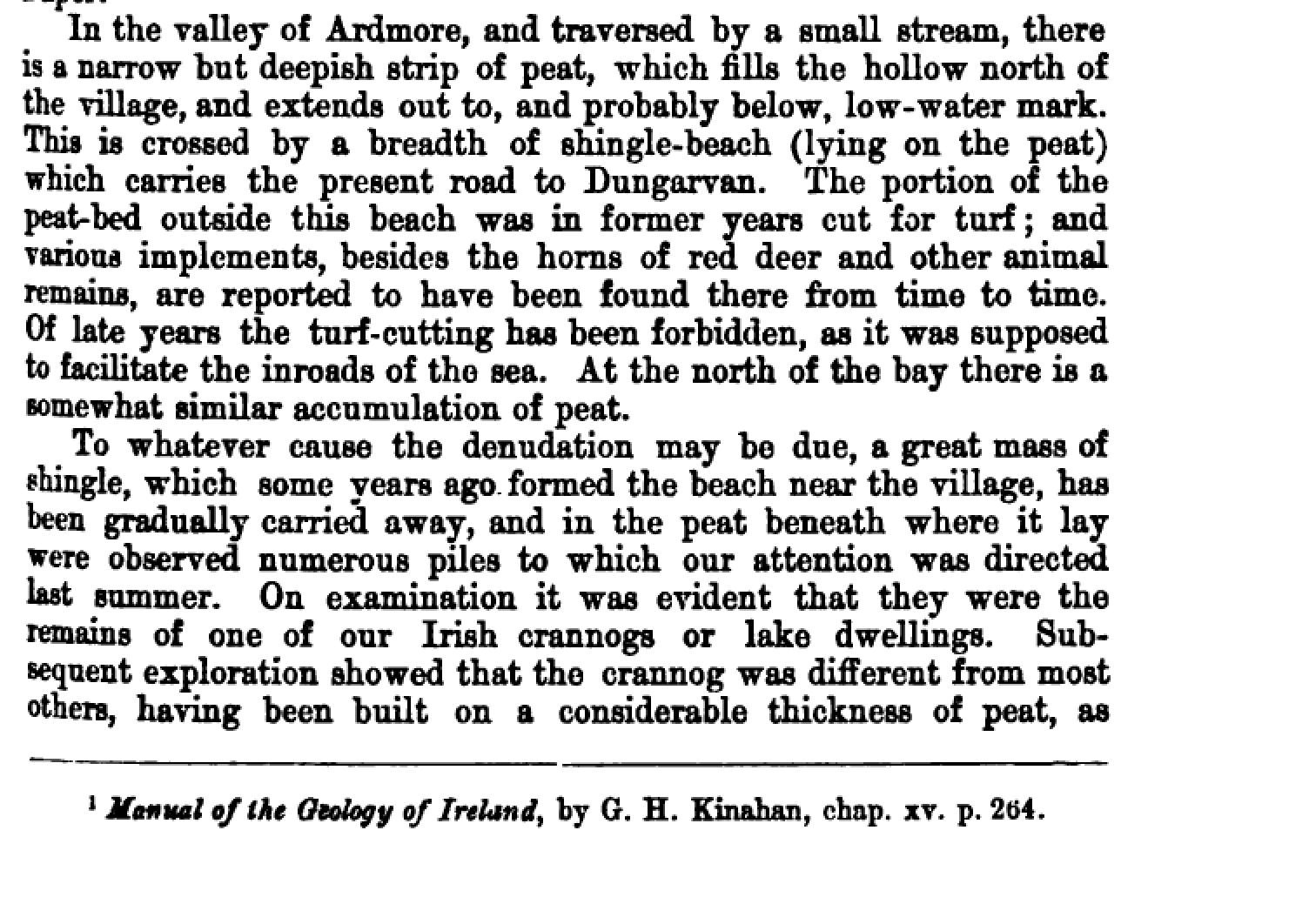
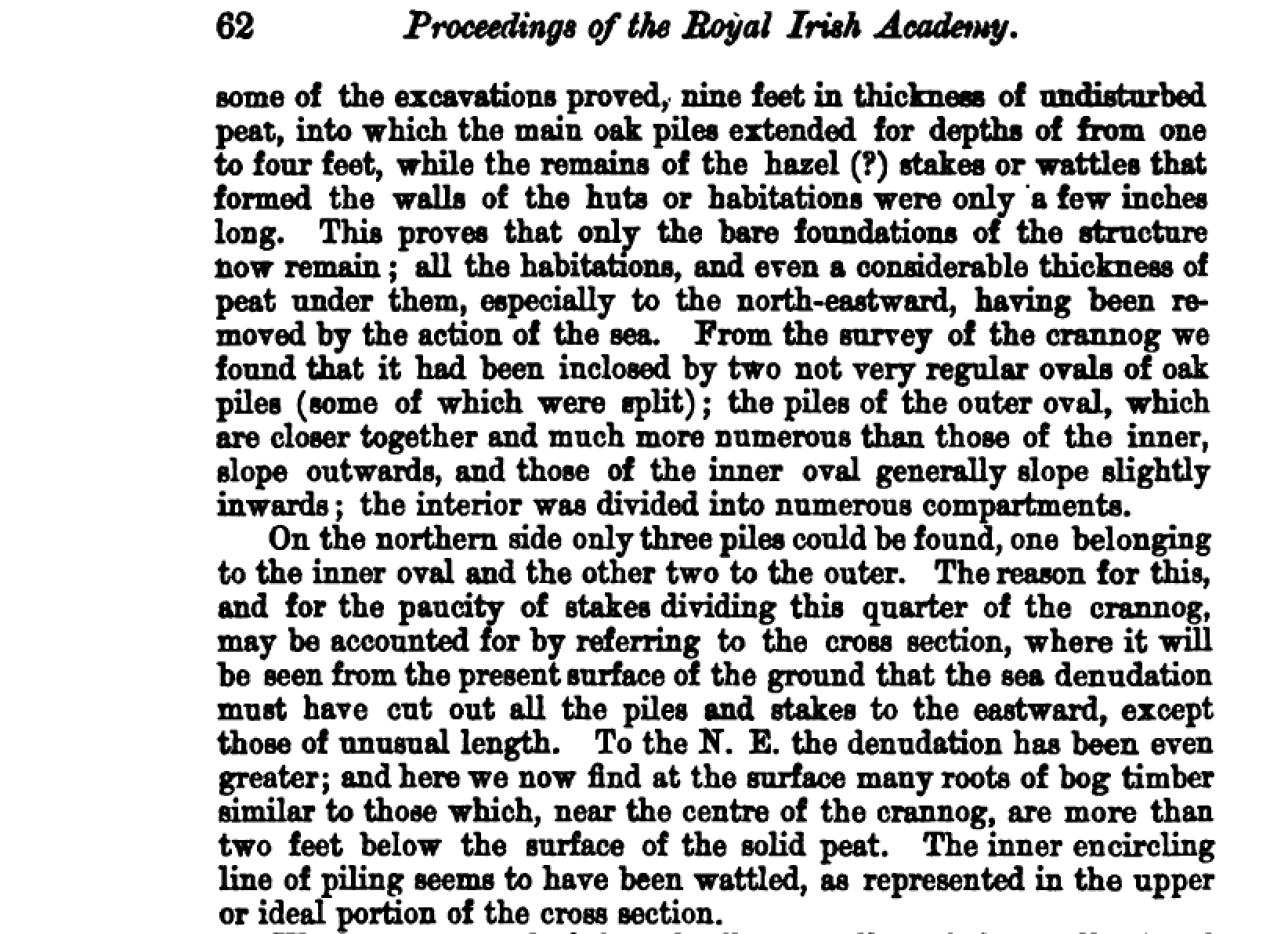
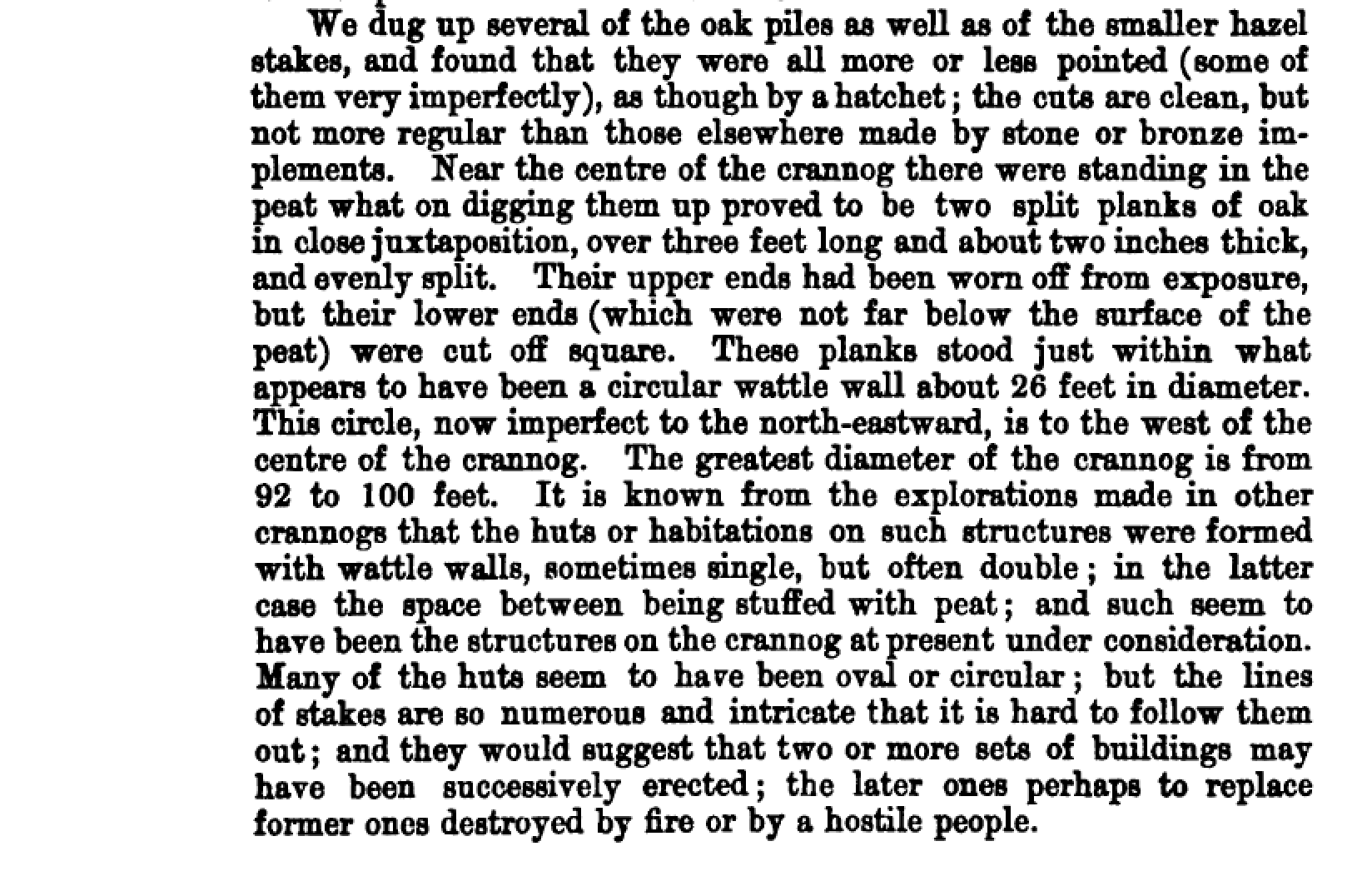
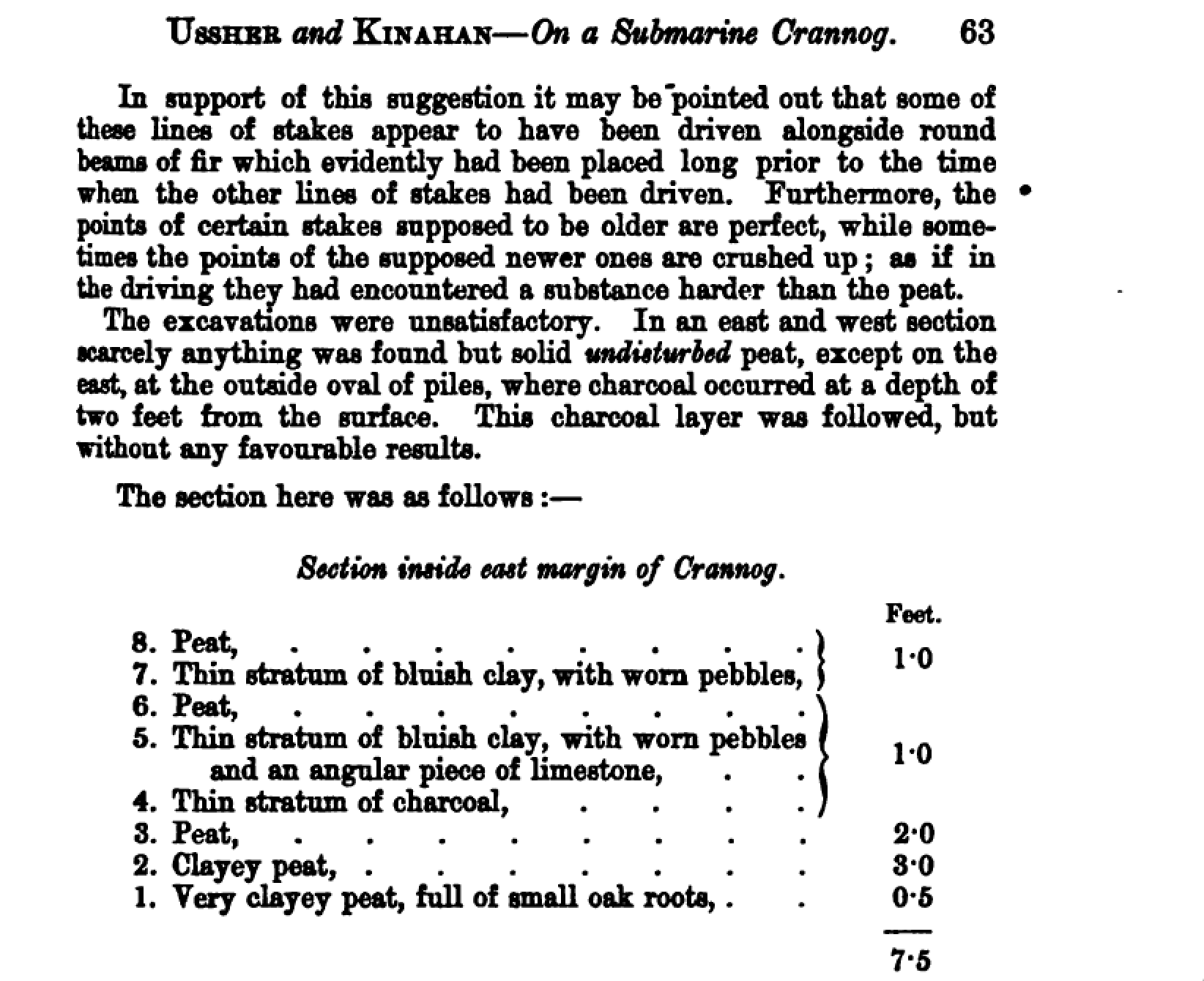
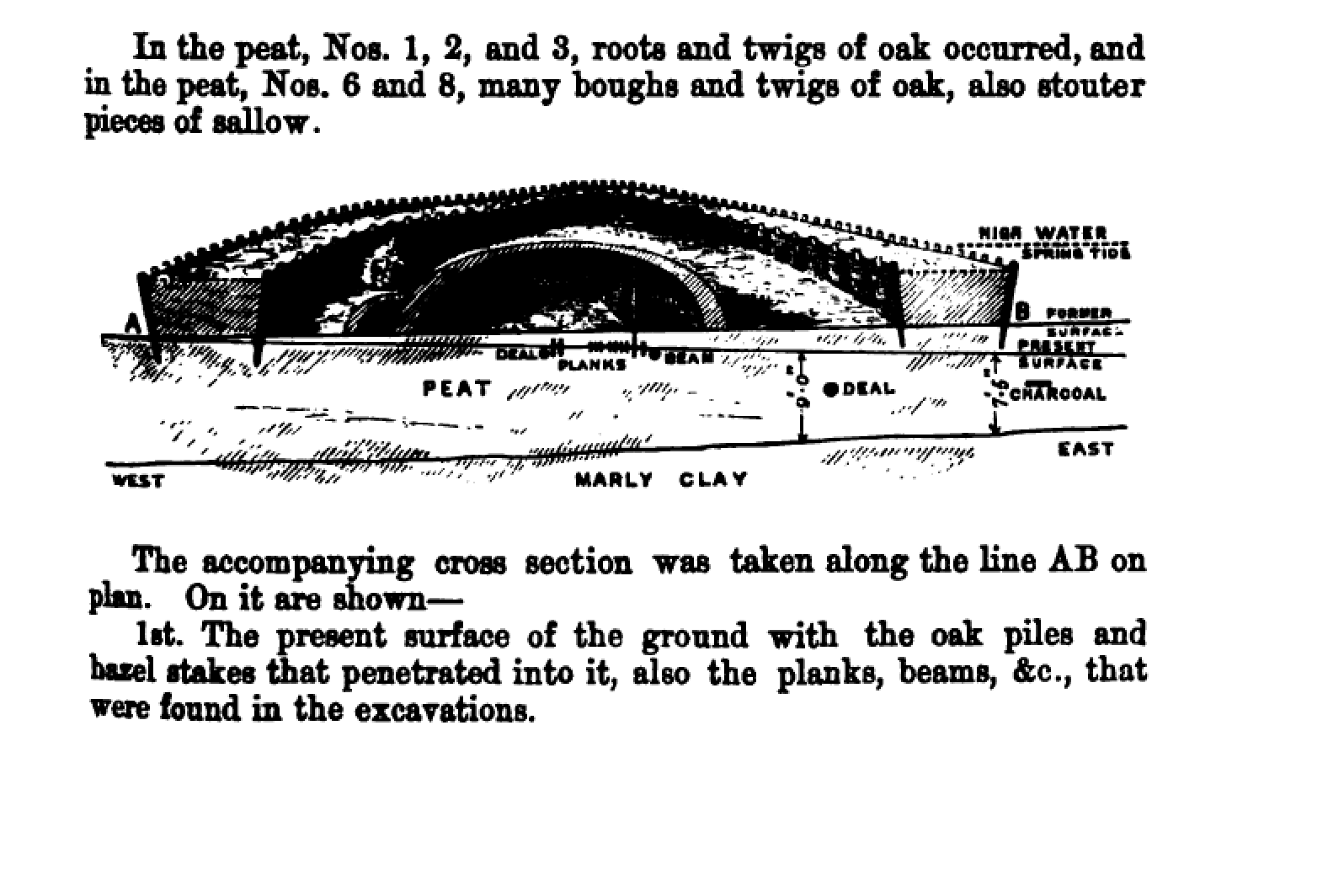
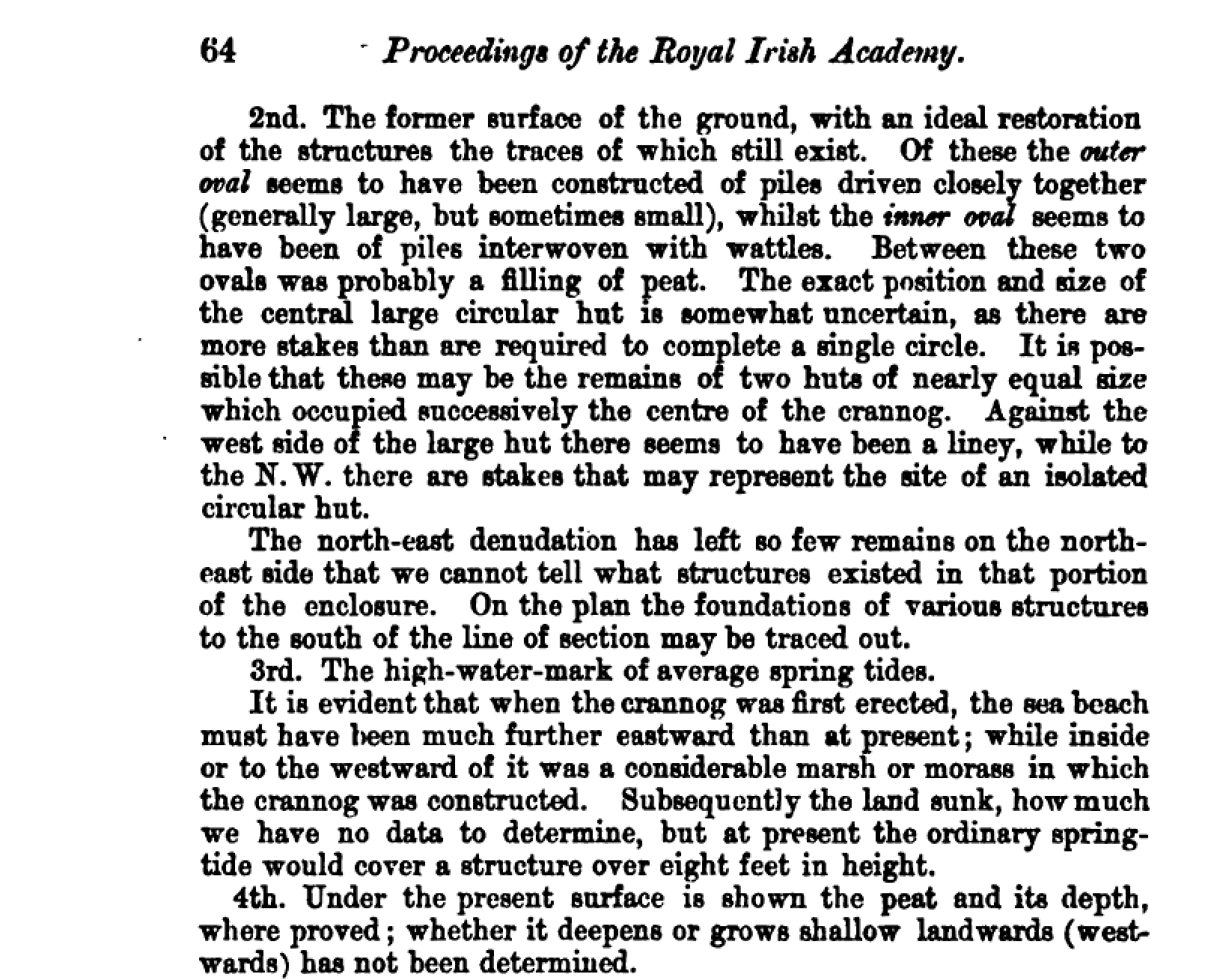
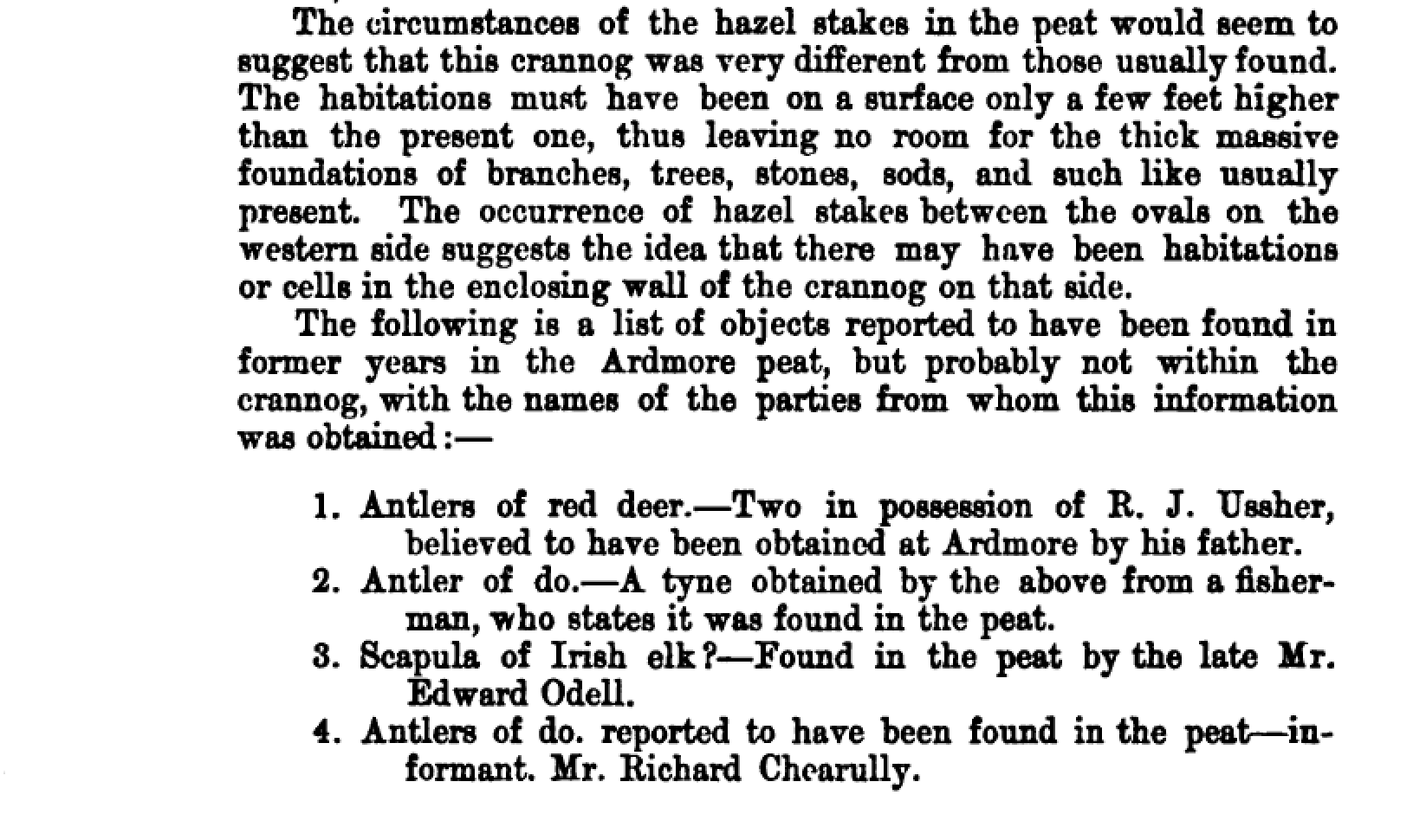
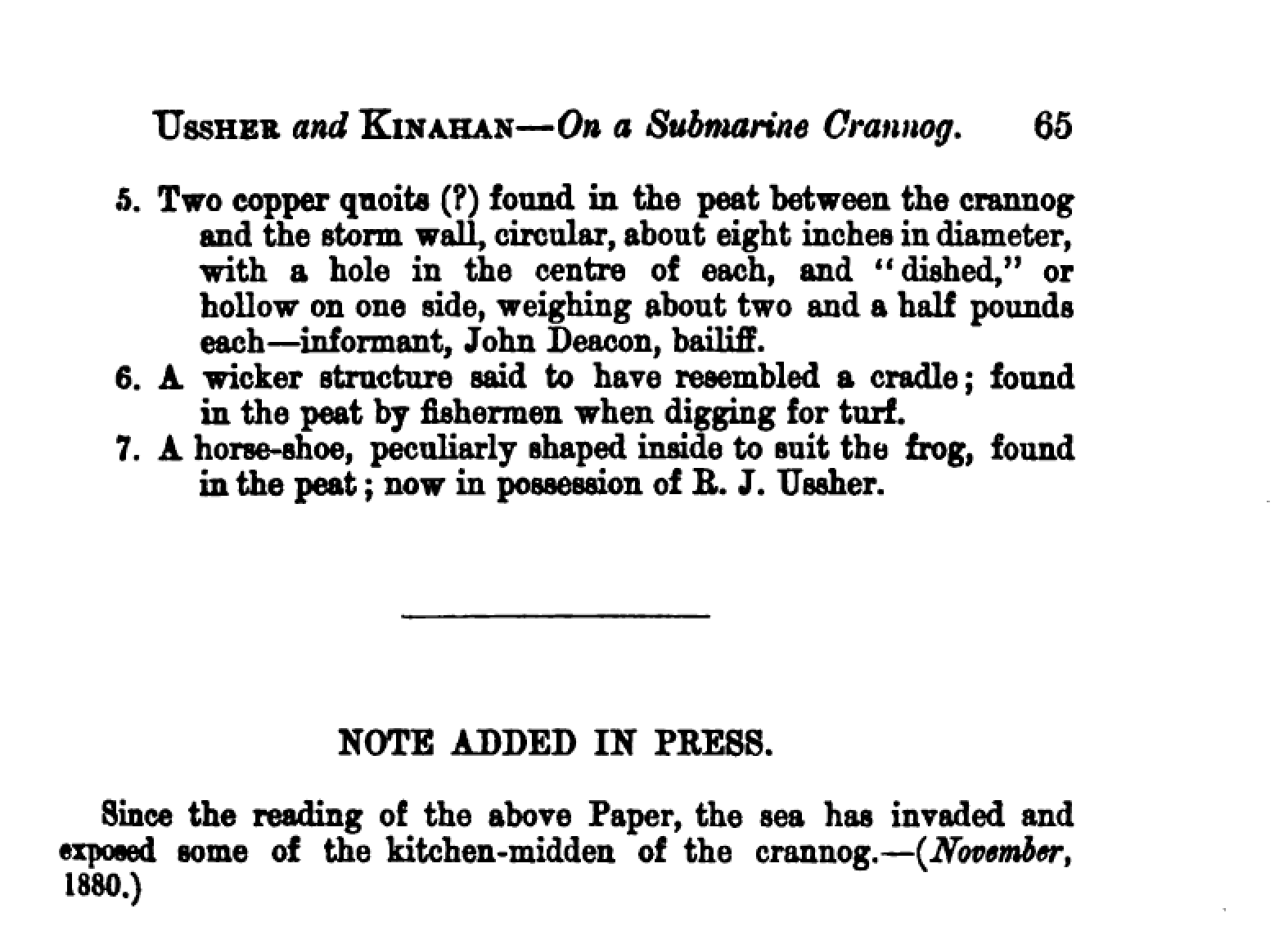
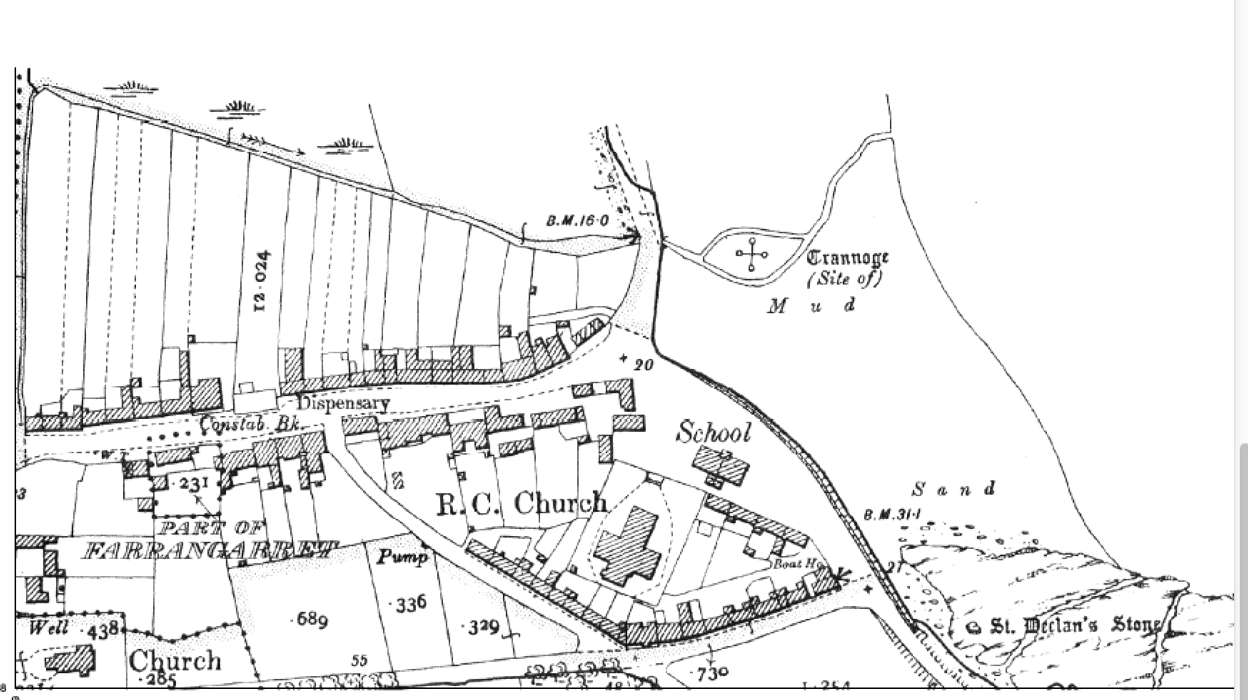
In Prehistoric Scotland and its place in European civilisation; being a general introduction to the “County histories of Scotland,” by Robert Munro (1899) discussed the crannog at Ardmore.
The only remains suggestive of ancient habitations known to me within the tidal shores of the British Isles are (i) a cairn of stones on a substratum of wood near the island of Eriska, at the mouth of Loch Crerar; (2) the Black Cairn, in the Beauly Firth ; (3) some stumps of piles in Ardmore Bay, county Waterford ; and (4) a curious wooden structure recently discovered at Dumbuck within the tidal area of the Clyde.
… The “submarine crannog” at Ardmore, discovered by Mr R. J. Ussher, 3 covers an oval space about 100 feet in diameter, and contains piles in a stratum of peat. The present sub- marine position of these remains may be reasonably accounted for on the strength of the evidence that a submergence of the land, since Neolithic times, has taken place along the southern shores of England and Ireland, while, during the corresponding period, the very opposite change has been proved to have occurred in Scotland and the north of Ireland. For further references to marine dwellings see ‘Lake-Dwellings of Europe,’ PP- 3″. 3 8 9, 443 573. and 574.
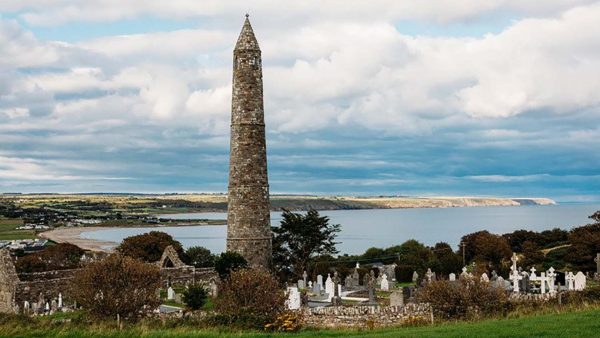
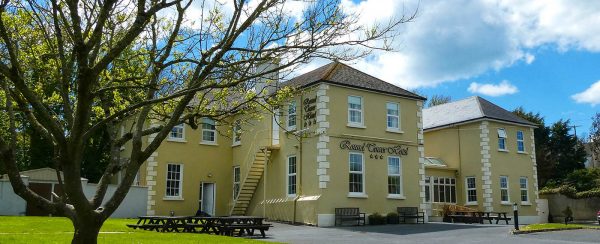
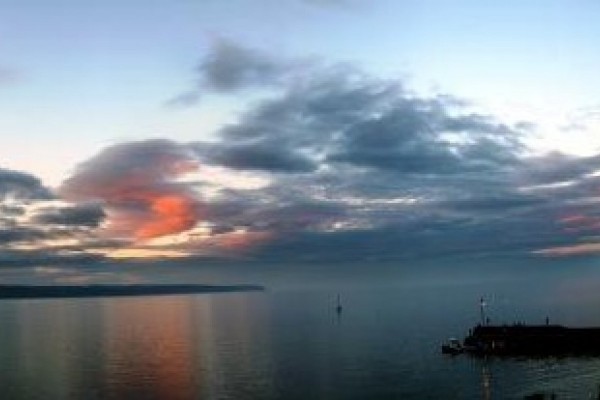
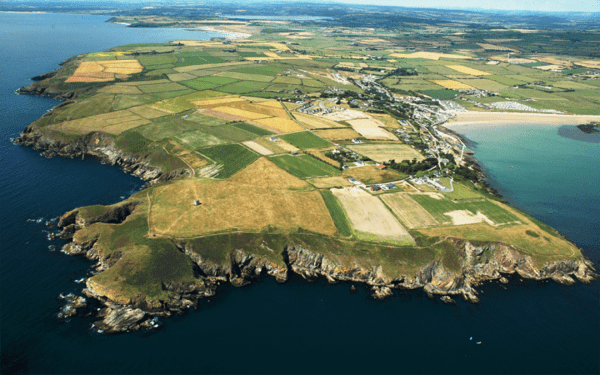

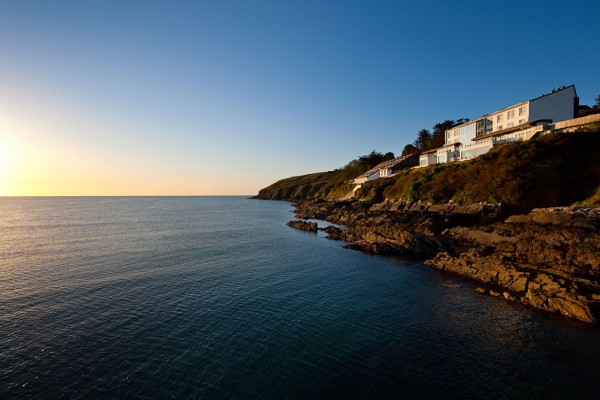
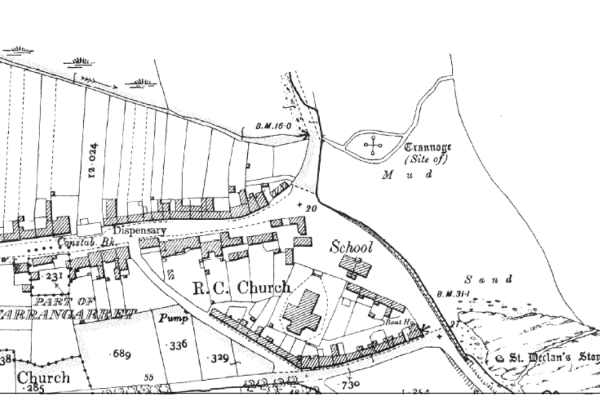
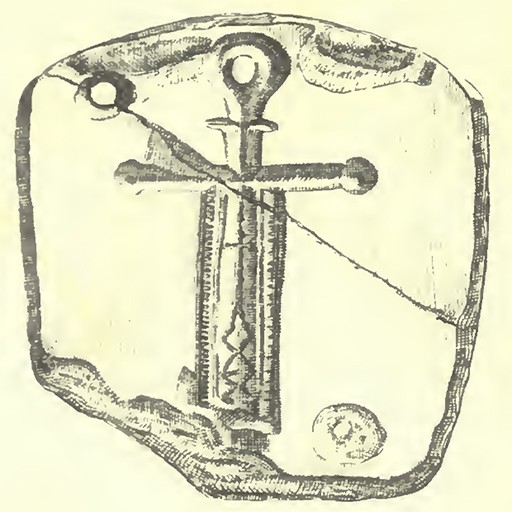
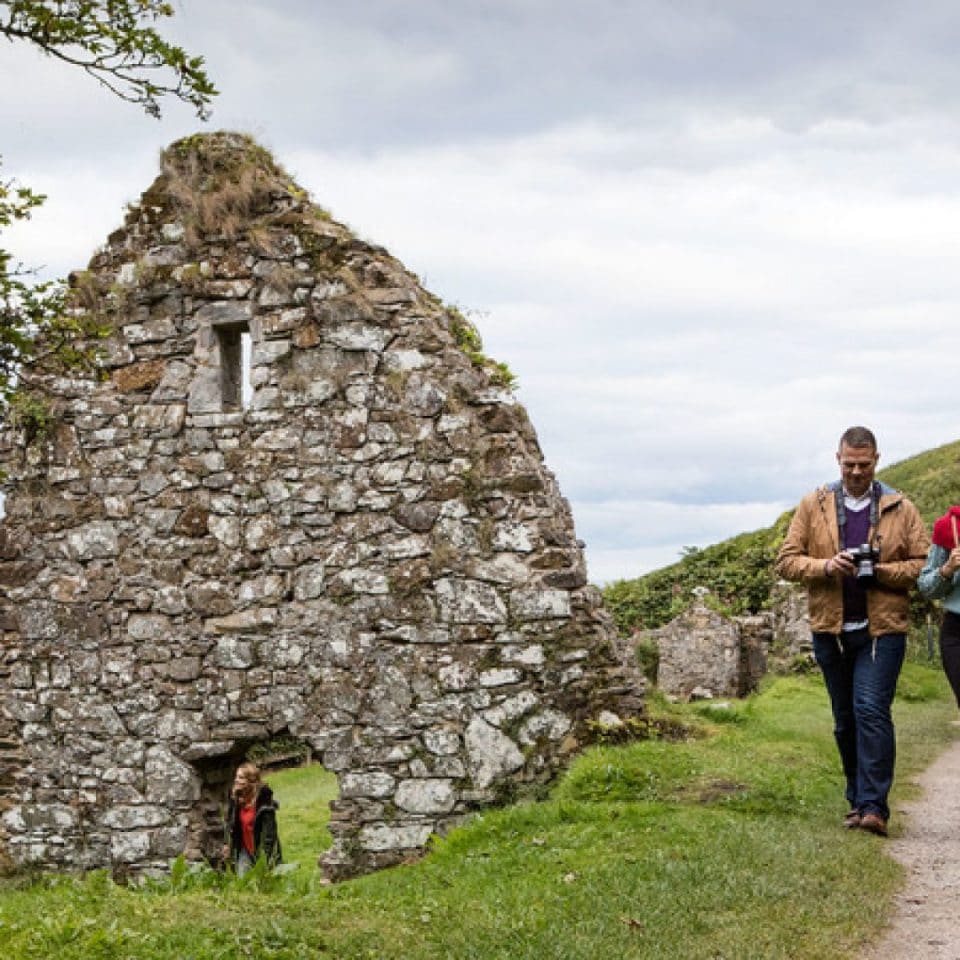
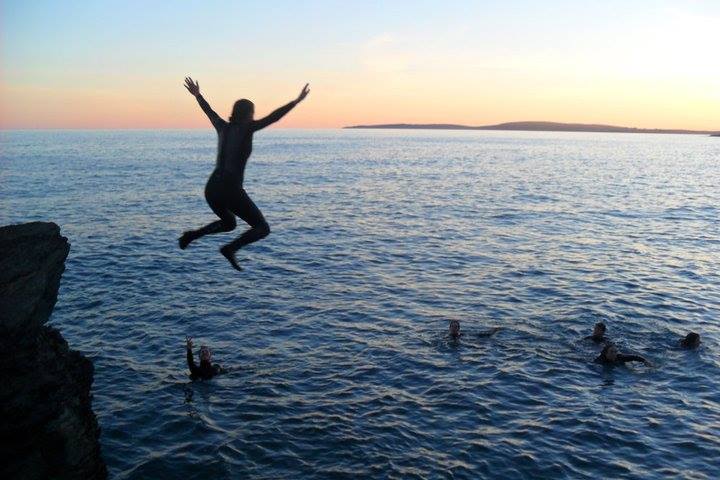

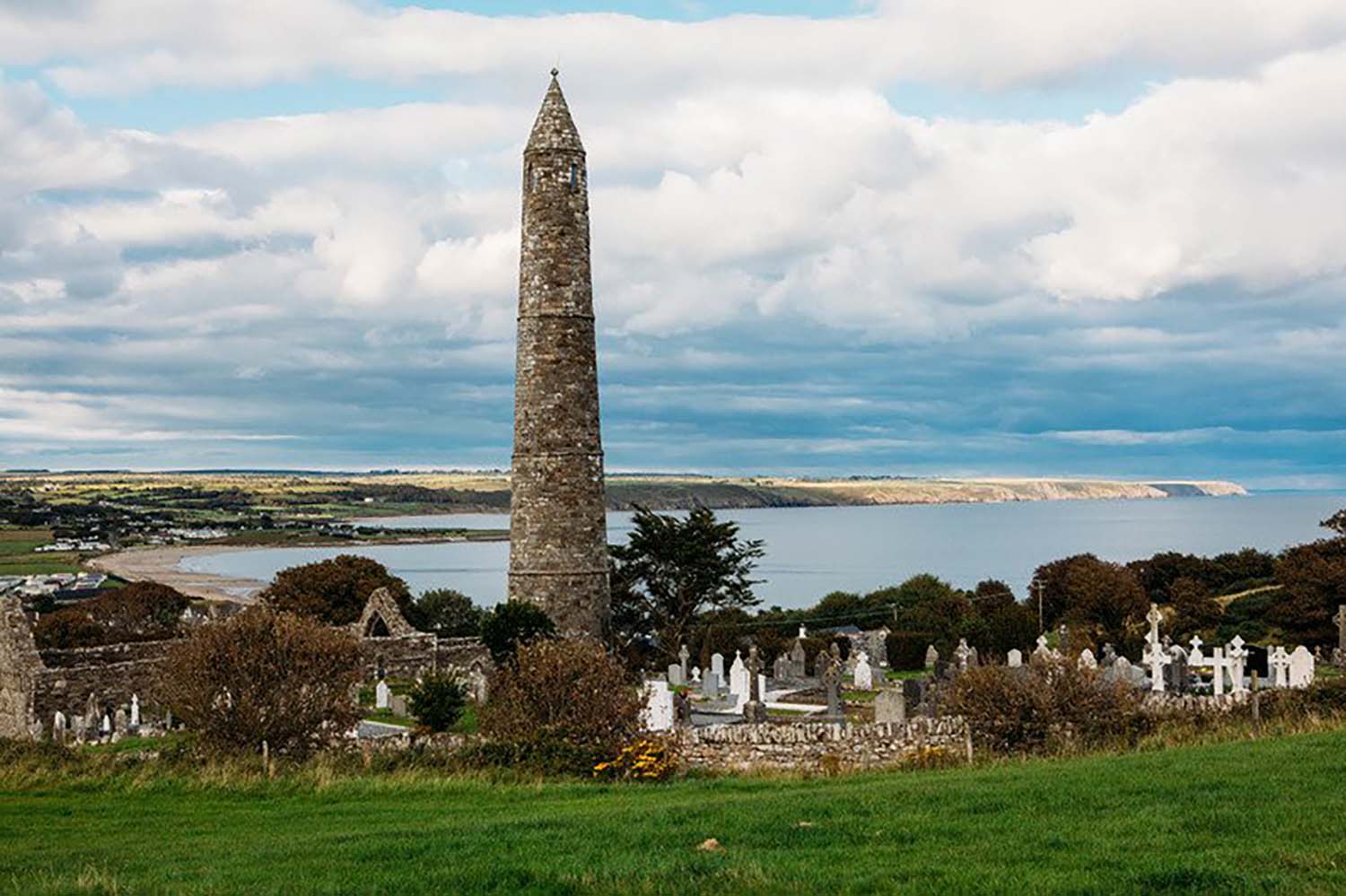
Ussher’s excellent and detailed description provides important information about relative sea-level on the south coast of Ireland. It complements the geophysical study of a submarine channel emerging from Waterford harbour and shows that the land continued sinking after the Neolithic and possibly after the Bronze Age if the bronze find was in situ.
It would be well worth obtaining a C14 date from these remains if they still exist.